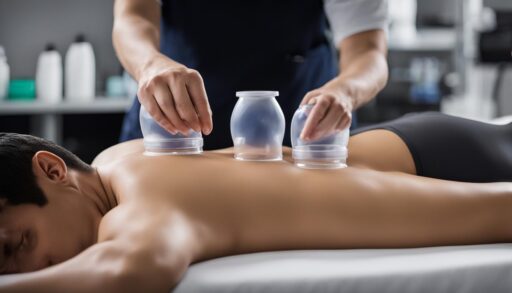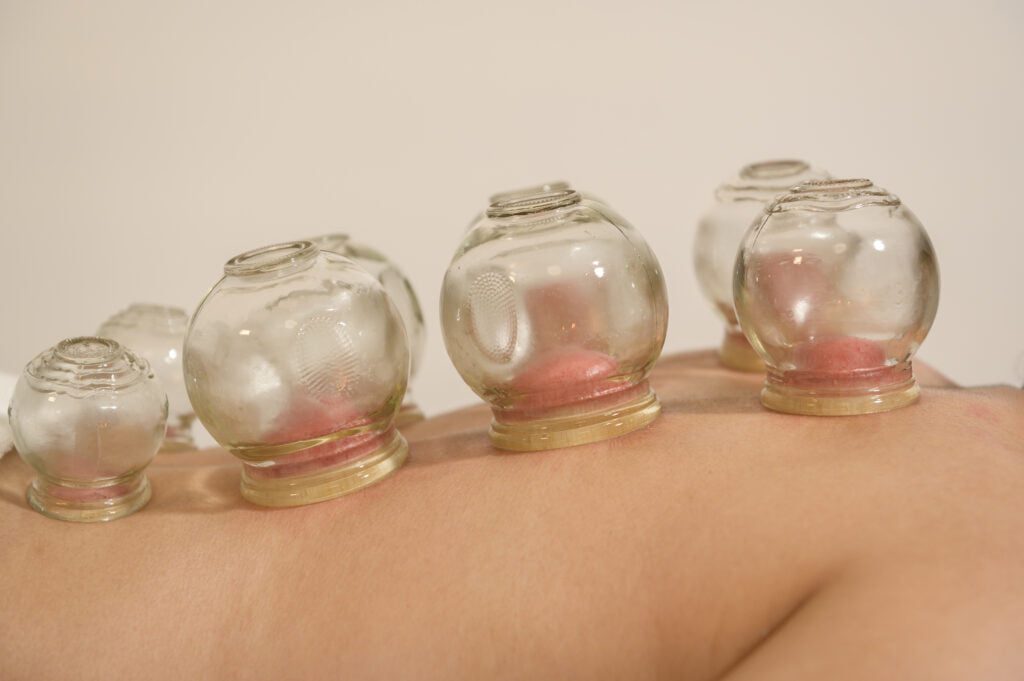Cupping Therapy
Paving your way towards a holistic and natural healing approach, “Cupping Therapy and Its Synergy with Acupuncture” provides you with enlightening information on how these two ancient Chinese medical practices work in tandem to play a vital role in promoting health and wellness. The article aims to illuminate the real essence and numerous benefits of cupping therapy, as well as how it harmonizes impeccably with acupuncture, delivering you the optimal healing experience. Not only will you gain insightful knowledge, but you’ll also obtain practical guidance for effectively integrating these therapies into your wellness journey. So, prepare yourself to embrace a newfound path towards healthier living and relieving ailments naturally.

Understanding Cupping therapy
Traditionally, cupping therapy is considered an ancient form of alternative medicine wherein your therapist will take special cups, either made of glass, bamboo, or silicone, and place them on your skin for a few minutes to create suction. This article will help you understand the unique and fascinating practice of cupping therapy better.
Concept of Cupping therapy
Picture this—you lie down on a therapy table, and your therapist places cups on your skin. They light a match, extinguishing the flame and placing the cup directly onto your skin, creating a vacuum as the air inside the cup cools. You feel a tight sensation in the area of the cup; this is how cupping therapy works at its core. It helps with a plethora of problems like pain, inflammation, blood flow, relaxation, and as a form of deep-tissue massage.
The history and origin of Cupping therapy
Historically, cupping therapy is a time-honored treatment highly regarded in many cultures such as Egyptian, Chinese, and Middle Eastern. The first documented uses are found in the Ebers Papyrus, one of the oldest medical textbooks in the world, which describes the Egyptians’ use of cupping therapy as early as 1,550 B.C.
Different forms of Cupping therapy
The variety of cupping therapy includes dry cupping, wet cupping, and massage (or moving) cupping. Dry cupping creates a vacuum only; wet cupping involves a small incision on the skin before the cup is applied, whereas moving cupping involves applying oil to your skin, creating the suction within the cup, and then sliding the cup around different areas of your body.
Basics of Acupuncture
Acupuncture, a significant component of Traditional Chinese Medicine, involves inserting thin needles into specific points on the body. It’s most commonly used to treat pain and manage other health conditions.
Principles of Acupuncture
The fundamental principle that underpins acupuncture is the concept of Qi (pronounced “chee”)—the vital energy flowing in the body along pathways known as meridians. Acupuncturists insert needles into designated points on these meridians to rebalance the flow of Qi, which in turn helps regulate health and wellbeing.
The history and origin of Acupuncture
Acupuncture’s origins trace back to ancient China, nearly 1000 years BC. The oldest medical textbook, ‘Huangdi Neijing,’ mentions the clinical use of acupuncture for several diseases. It gained worldwide acceptance over the centuries and is now endorsed by the World Health Organization for certain conditions.
Diverse methods of Acupuncture
From traditional methods to modern needle-less techniques, the practice of acupuncture has evolved significantly. Techniques include body acupuncture, ear acupuncture, electroacupuncture, and even acupressure, which uses physical pressure instead of needles.
The Synergy of Acupuncture and Cupping Therapy
Acupuncture and cupping therapy can be seen as two sides of the same coin—they both aim to restore the body’s balance and promote healing using different means. When used in conjunction, they form a formidable team in combating disease and promoting health.
Conceptual affiliation between Acupuncture and Cupping Therapy
Acupuncture and cupping therapy both stem from Traditional Chinese Medicine and share the same fundamental philosophy—balancing the body’s energy flow to promote health and wellness. They work on energy pathways (meridians) and target specific points (acupoints) on the body, providing a holistic approach to health.
Dual benefits of integrating Acupuncture and Cupping Therapy
When teamed up, acupuncture and cupping therapy deliver an enhanced therapeutic effect. They complement each other beautifully—while acupuncture works on a micro-level by targeting specific points, cupping therapy aids on a macro level by promoting circulation, eliminating toxins, and relieving muscle tension over larger areas.
Procedure of Cupping Therapy and Acupuncture
Understanding the methods and steps involved will help you feel prepared, relaxed, and ready to reap all the benefits your session has to offer.
Methodology of Cupping therapy
Your cupping therapy session starts with the therapist soaking a cotton ball in alcohol and igniting it. This flaming ball is then inserted briefly into a cup, removing the oxygen and creating a vacuum as the flame goes out. The cup is quickly placed on your skin where it creates suction, drawing your skin up into the cup.
Steps involved in Acupuncture
You’ll recline comfortably while your acupuncturist inserts very thin, sterile needles in specific points on your body. While some people feel a slight pricking sensation as the needle is inserted, many feel no discomfort at all. The needles usually remain in place for 15-30 minutes while you relax.
The common flow when combining Cupping Therapy with Acupuncture
When combined, the therapy usually starts with acupuncture to start balancing energy flow. Then, the cupping therapy is applied, enhancing the detoxification and relaxation process started by acupuncture. After, the needles are removed, concluding the session.

Scientific Perspective on cupping therapy and acupuncture synergy
As both therapies gain global recognition, scientific research bolsters their effectiveness and unravels the sophisticated science behind them.
Scientific research supporting the effectiveness of the combination
Several scientific studies corroborate the enhanced health benefits of combining acupuncture and cupping therapy. Jointly, they have been seen to provide relief for conditions like chronic neck and shoulder pain, herpes zoster, and facial paralysis more effectively than individually.
Explanation of the science behind the synergy
The synergy is anchored in their shared principle—the balance and flow of Qi. While acupuncture removes blockages in the Qi flow, cupping complements it by detoxifying the body and improving blood flow. The result is a harmonized energy flow, improving overall wellness.
Beneficial effects of combining Cupping Therapy with Acupuncture
Improving a variety of ailments, this dynamic duo could provide you with much-needed relief.
Pain relief and muscle ease
For individuals who experience chronic pain, including headaches and muscle tension, combining acupuncture and cupping can provide substantial relief. It aids in relieving muscle stiffness and promotes quicker recovery from muscle injuries.
Stress management and mental health benefits
Acupuncture is well documented for its stress-reducing effects, complemented by the relaxing deep-tissue massage-like effects of cupping, making their combination an excellent stress buster. Additionally, they have been shown to help manage anxiety and depression.
Boosting immune function and improving digestion
Their combined ability to restore energy balance and improve blood circulation results in enhanced immune response, helping fight off illness. They also aid in improving digestion by stimulating digestive organs.

Precautions and Contraindications
While generally safe, like any other therapy, acupuncture, and cupping have potential risks that one should be aware of.
Potential risks associated with Cupping Therapy
Although cupping is usually safe, it can cause some side effects like slight discomfort during the process, burns, bruises, and even skin infections. Therefore, it must be administered by certified practitioners.
Possible side effects of Acupuncture
Side effects from acupuncture can include soreness, light-headedness, and emotional shifts. Serious side effects are rare but can include infection or punctured organs if not performed correctly.
Who should avoid these therapies?
Pregnant women, individuals with bleeding disorders, those taking blood thinners or having a skin infection, should avoid cupping. Similarly, people with pacemakers should avoid electropuncture, and those susceptible to fainting or seizures should inform their acupuncturist.
Discrediting Misconceptions
Let’s burst some myths surrounding these therapies and set the record straight about combination therapy.
Myths about Cupping Therapy
A common misconception about cupping therapy is that it’s painful and causes burn injuries. However, when administered by a certified practitioner, it’s generally pain-free, and risks of burns are minimal.
Misunderstandings about Acupuncture
Many believe that acupuncture is painful because it involves needles. But the needles used are extremely thin, and most people experience minimal to no discomfort. It’s also incorrectly thought that acupuncture is only for pain management, while it can help various health issues.
Setting the facts straight on the combination therapy
Some people might think that combining therapies is unnecessary and overdone. However, scientific research suggests that these two therapies work better together, providing an enhanced effect that either therapy alone might not fully accomplish.
Case studies relating to Cupping Therapy and Acupuncture synergy
Clinical studies and case reports fortify the therapeutic potential of this blending of Eastern therapies.
Documented cases showing favorable outcomes
Several documented cases have illustrated the success of the combined therapy. From managing pain and facial paralysis to improving digestion and general wellness, patients reported significant relief.
Analysis of successful therapy sessions
Analyses indicate that successful therapy sessions are typically characterized by a personalized blend of both techniques administered by certified practitioners, tailored for the specific ailments of the individual.
Real-world impact of the combined treatments
The combined treatment offers real-world impact by alleviating physical pain and emotional stress, enhancing vitality, and promoting healthier living. The holistic approach of these therapies provides not just symptomatic relief but contributes to improved overall health.
Future prospects of Cupping Therapy and Acupuncture blend
The therapeutic fusion of acupuncture and cupping therapy holds promising potential for the future.
The potential of the therapy combination in dealing with chronic illness
Given their dual benefits in managing pain and improving wellness, their potential in managing chronic illnesses like fibromyalgia, digestive disorders, and even mental health problems seems promising.
Ongoing research and advancements
With expanding research, advancements in practices, and better insights into the biological effects, we can anticipate even more effective and diverse applications emerging.
The global acceptance and recognition of the combined therapy
The combination therapy of acupuncture and cupping is gaining widespread global acceptance due to its compelling therapeutic benefits. The World Health Organization’s recognition of acupuncture’s benefits is a significant testament to its growing acceptance.
In conclusion, the integration of cupping therapy and acupuncture offers wide-reaching health benefits. Always remember to seek treatment from certified professionals and openly communicate about your health history and expectations. Whether you aim to master the pain, handle stress better, or seek improved well-being, it’s certainly an alternative worth considering.
Cupping Therapy
For those interested in cupping therapy, here are three authoritative and comprehensive websites to explore:
- International Cupping Therapy Association (ICTA): ICTA is a premier organization dedicated to providing comprehensive information, workshops, and training on cupping therapy. It serves as a resource for healthcare providers seeking to incorporate cupping into their practices, offering details on the history, methods, equipment, and benefits of cupping therapy. The site also provides access to marketing materials, studies, and specialized treatments for its members (ICTA). Visit their website at cuppingtherapy.org.
- Cleveland Clinic: Renowned for its medical insights, Cleveland Clinic’s webpage on cupping therapy offers an overview of the practice, including its definition, types, benefits, and the procedure itself. It explains how cupping therapy uses suction to promote healing and improve conditions such as arthritis, back pain, and high blood pressure. The site also discusses the various cupping methods, what to expect after cupping, and potential risks and benefits (Cleveland Clinic). For more information, check out their detailed guide at my.clevelandclinic.org.
- Authentic Cupping: This website provides a comprehensive guide for beginners interested in practicing cupping therapy at home. It covers how cupping works, the different types of cupping, and the benefits, including pain relief, improved circulation, detoxification, and relaxation. The site also outlines what you’ll need to get started, different techniques, safety precautions, and post-cupping care (Authentic Cupping). Visit authenticcupping.com for detailed instructions and more.
These sites offer a wealth of information for both practitioners and individuals interested in learning more about cupping therapy, its benefits, and how to safely practice it.
